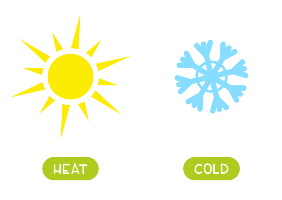Rating scales are essential tools when you want to produce and distribute a quantitative questionnaire. If you are interested in quantitative research methods or want to create a questionnaire for your market research, many answers to your questions can be found in our white paper on market research. You can download it here.
Summary
Are the rating scales limited to the quantitative questionnaire?
While the different types of scales are used mainly in quantitative research, they are not necessarily restricted to it. You can, of course, use them in some cases in qualitative research, for example. However, you will have to be particularly careful in doing so, since the objective of qualitative research is still to allow the respondent to express his or her views on a given subject.
Some contexts where you can use scales in qualitative research
- Define or confirm the respondent’s profile
- Help to contextualise certain response elements (frequency)
- To deepen a theme
- Assist the respondent in understanding the question and in expressing an answer.
- In structured interviews or interviews with a large number of respondents
However, the uses mentioned below remain rare. In most cases, rating scales (objective, subjective, Likert, semantic differential) are recommended in quantitative questionnaires. They allow the respondent to have a multiple choice of answers while simplifying the future analysis of the results. By imposing these so-called response elements, you avoid free field text which proves particularly laborious to process if you have a large panel of respondents.
Rating scales are mainly present in customer satisfaction and customer experience questions because they offer the possibility of scaling responses and analysing the different degrees of the opinion of respondents. They are often designed to investigate and measure respondents’ attitudes, perceptions, beliefs and preferences, as well as introspection.
These rating scales also have their place in quantitative tests related to a product or service since they make it possible to capture the respondents’ perceptions according to a given scale.
Our advice
When drawing up your quantitative questionnaire, pay particular attention to the wording and response elements proposed, especially for scale questions. They are more challenging to master than other types of closed-ended questions such as multiple-choice questions. Go over them several times and reread them with a clear mind.
credits: Shutterstock
The Likert scales
We have spoken about the Likert scales in a previous article on quantitative research. However, it is essential to recall some crucial points here.
Definition point
The Likert scales aim to understand the degree to which the respondent agrees or disagrees with a given statement. The Likert scale can be formulated in a variety of ways:
The 4-point Likert scale provides respondents with the following suggested responses:
- Strongly disagree
- Disagree
- Agree
- Strongly agree
The 5-point Likert scale offers the same response options and adds the character of neutrality:
- Strongly disagree
- Disagree
- Neither agree nor disagree
- Agree
- Strongly agree
We strongly advise you to use the 5-point variant of the Likert scale, which is much more precise and avoids the loss of precision in the answers since the option of neutrality is offered to the respondents. In general, as you know, the 7 response options should not be exceeded so as not to overload respondents cognitively. As far as Likert scales are concerned, always give preference to odd-numbered scales.
Example 1
I am satisfied with the time taken by customer services to process my complaint.
The 5-point Likert scale is particularly suitable for different types of questionnaires and combines accuracy with ease of use and analysis.
The example above is a typical example of the use of this scale in satisfaction surveys where the aim is to understand whether users or clients consider that improvements are needed:
-
-
- If the majority of responses are “Disagree” or “Strongly Disagree“, then concerns about customer service management and practices will need to be addressed.
- If the majority of respondents were neutral, then the situation and satisfaction appear to be correct. However, there is room for improvement.
- If the majority of the answers oscillate between “Agree” and “Strongly agree“, then the processes in place can be considered successful and the changes and efforts made are showing satisfactory results.
-
The Likert scale can also be used to test certain consumer behaviours.
Example 2
I think the application is easy to use.
The biases of the Likert scales
Likert scales are subject to two biases: that of compliance and that of social desirability.
The compliance biases
The compliance bias is the tendency to agree with others and with the statements made. Thus, the wording (positive or negative) of comments related to the Likert scales will potentially influence respondents’ responses. The wording acts as a cognitive bias.
For example:
-
-
- It is easy to navigate on the platform
- It is difficult to navigate on the platform
-
credits: Shutterstock
Here, the bias is to agree with both assertions, although they are contradictory. Thus, it is possible to propose these two assertions (one positive and one negative) in your questionnaire while spacing them out to confirm the answers given.
It is also possible to get around this bias by making both positive and negative statements (situation 1):
-
-
- Question 1: The advertising poster is legible (positive wording)
- Question 2: The catchphrase does not arouse my interest (negative wording)
- Question 3: The colours used are appropriate (positive wording)
-
It is also possible to interchange the order of the answers on the scale (situation 2):
-
-
- Question 1: I am satisfied with the in-store service
-
-
-
- Question 2: The salespeople give good advice
-
-
-
- Question 3: The atmosphere in the shop is pleasant (smell, warmth, music)
-
In both cases, the risk is the same since it relates to the attention respondents will pay to the questions (situation 1) or the response options (situation 2) and whether they become aware of these changes.
Note also that in these examples, the colours in the examples make it easy to visualise the associated response. However, in most cases, scales are presented neutrally in surveys (see below), which does not allow for a quick association.
It should also be noted that the use of colours or shapes should be consistent with the culture in which you wish to distribute your questionnaire.
The social desirability biases
This bias is linked to the willingness to identify with perceptions confirmed by others. Everyone will tend to respond according to what is socially accepted and considered valid. Thus, it is possible that respondents are influenced by this bias and may choose a somewhat different response option.
This bias is more significant when the identity of the respondent is revealed. Ensuring the anonymity of your respondents will therefore increase your chances of collecting accurate responses.
credits: Shutterstock
Semantic differential scales
The functioning of semantic differential scales is similar to that of Likert scales. They can also be formulated with different points (from 3 to 7) as response options. Once again, we advise you to orient yourself towards an odd number of response options to allow respondents to assert their neutrality.
What does this involve?
Semantic differential scales are based on the juxtaposition of antonymous adjectives. Respondents will have to evaluate their position, attitude or perception according to these opposing terms.
Example
My stay at the Ibis Hotel in Montpellier was:
3-point scale:
5-point scale:
7-point scale:
In the example shown here, the points of the scales are not numbered, which is often the case when using semantic differential scales. There are two alternatives to this:
-
-
- However, it is possible to name and graduate the scale with adverbs such as very, somewhat, enough, particularly, and so on, to nuance the purpose and the scale.
- You can also number the points on the scale to make it easier for respondents to read and thus lighten the cognitive load.
-
The 2 requirements to ensure the validity of the data collected via these scales
- The pair of adjectives chosen must be confirmed antonyms and be on either side of the spectrum. Make sure you find the most suitable adjectives to be able to extract the data you need (questions) but also to ensure the validity of its data (answers).
- For this type of scale, the respondents’ common sense comes into play, especially if the points are not labelled (verbatims or numbers). Thus, respondents may interpret the proposed scales and degrees differently from one another.
credits: Shutterstock
Objective and subjective scales
These scales are mainly used to define the degree related to frequency, quantity, duration and quality and thus assess customer behaviour.
What is the difference between these two rating scales?
Objective scales are based on respondents’ memories and facts, while subjective scales are based on feelings. Thus, the same question will see two very distinct forms of response depending on the choice of scale (objective or subjective). The semantic differential scale and the Likert scale mentioned above are part of the subjective scales since they both refer to the respondents’ feelings, sentiments and impressions.
Here is a concrete example to illustrate the difference between an objective and a subjective scale:
I buy organic fruit and vegetables:
| Objective scale | Subjective scale |
|
|
credits: Shutterstock
Conclusion
The three types of scales that we have just presented will be beneficial when you draw up your quantitative questionnaire. When you have arrived at this stage, do not hesitate to take the time to think about each question as such and as part of the questionnaire. Testing your questionnaire with your family and friends, and acquaintances will also allow you to understand whether your wording is appropriate and will give you the results you expect. This will allow you to test whether one scale or another is more appropriate depending on the context of the question. Don’t hesitate to iterate and modify elements based on the initial feedback before distributing your questionnaire to your entire panel.
Illustrations: Shutterstock
Posted in Marketing.










